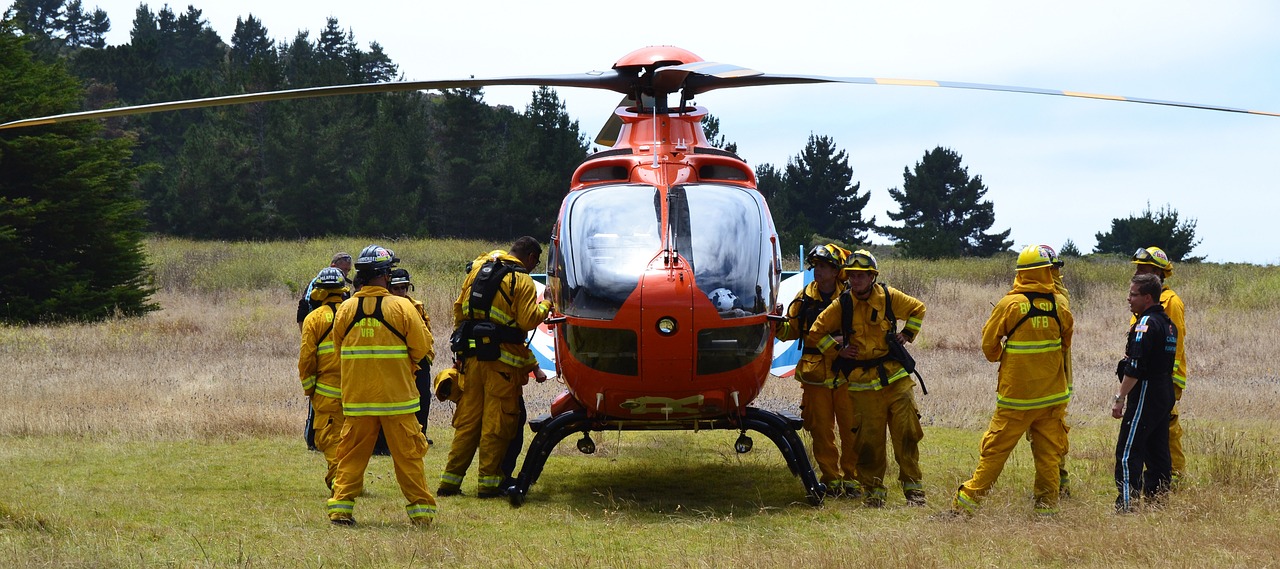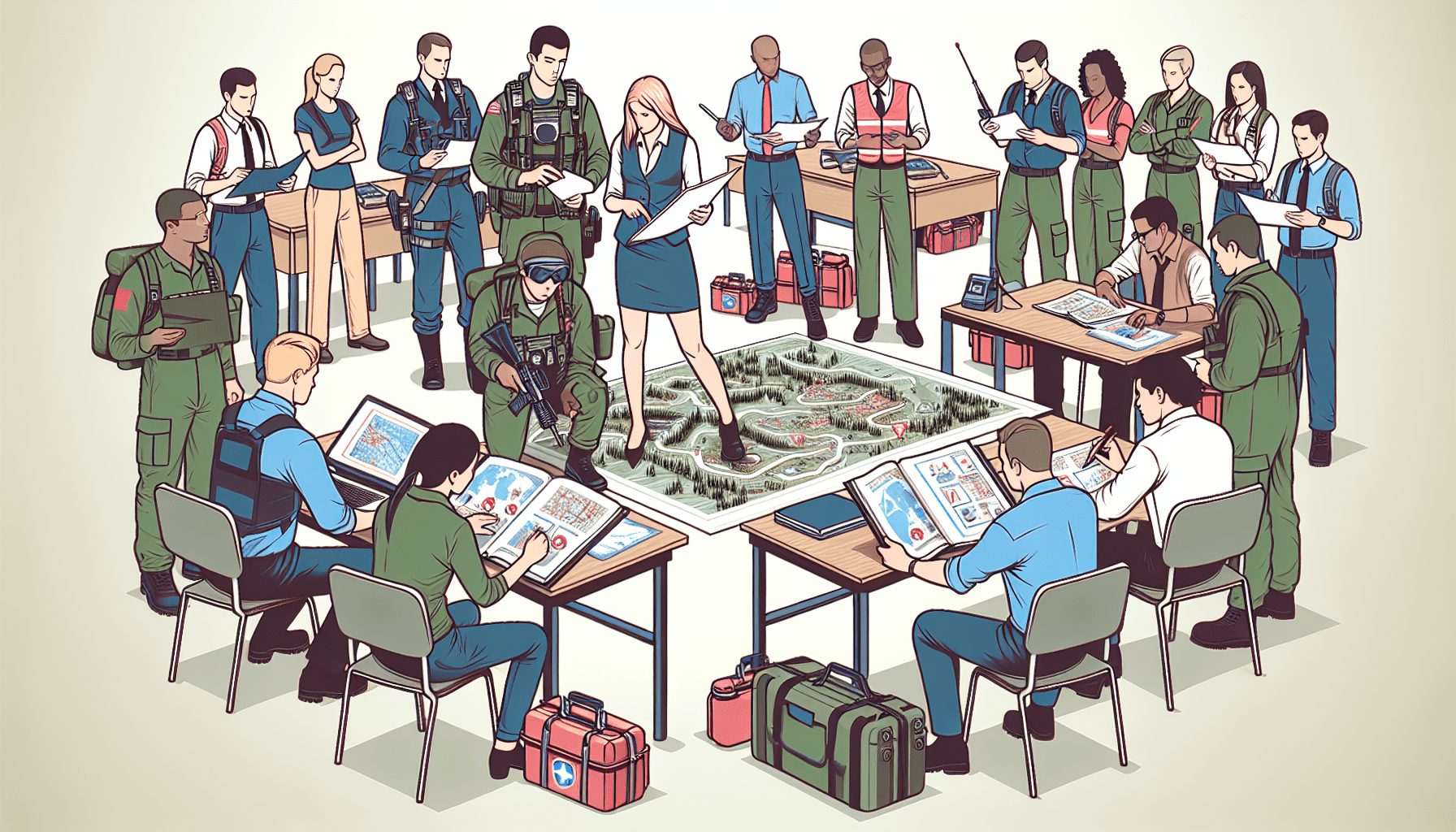In a world where active shooter situations are unfortunately becoming more common, it is essential for preppers to be equipped with the knowledge and skills to handle such emergencies. Being prepared can mean the difference between life and death in these intense and chaotic scenarios. In this article, we will explore the top ways for preppers to effectively prepare for active shooter situations. From developing an emergency plan to enhancing your situational awareness, these strategies will empower you to stay calm, act decisively, and protect yourself and your loved ones.

Developing Situational Awareness
Understanding the threat of active shooters
Developing situational awareness is crucial in preparing for active shooter situations. By understanding the threat posed by active shooters, you can better recognize potential signs of danger and take proactive measures to keep yourself and others safe. Active shooters are individuals who engage in armed attacks in public spaces, targeting innocent people. They often have a specific agenda or motive, and their actions can be unpredictable and highly dangerous.
Staying alert and observant in public places
To develop situational awareness, it is essential to stay alert and observant when in public places. Avoid getting distracted by your phone or other electronic devices, and instead, focus on your surroundings. Pay attention to people’s behavior, body language, and any unusual or suspicious activities. By remaining vigilant, you can identify potential threats and take appropriate actions to protect yourself and others.
Recognizing potential signs of danger
Being able to recognize potential signs of danger is a crucial aspect of situational awareness. Some common warning signs may include individuals acting nervously or erratically, wearing heavy clothing, or carrying suspicious bags or backpacks. Trust your instincts and if something feels off or out of the ordinary, stay alert and consider reporting your concerns to the appropriate authorities.
Avoiding complacency in familiar surroundings
It is easy to become complacent in familiar surroundings, such as your workplace or neighborhood. However, it is important to remember that threats can occur anywhere. Avoid falling into the trap of feeling overly safe in places you frequent often. Instead, maintain a level of awareness and always be prepared to respond to any potential emergencies or threats that may arise.
Creating an Emergency Plan
Identifying safe and secure locations
As part of your emergency preparedness plan, it is important to identify safe and secure locations both within your community and outside of it. These locations can serve as potential shelters or meeting points in case of an active shooter situation. Research and make a list of nearby emergency shelters, hospitals, police stations, or other secure buildings where you can seek refuge if needed.
Establishing communication protocols
Communication is key in any emergency situation. Establish clear and effective communication protocols with your family, friends, and trusted individuals. Determine an emergency contact person who can serve as a central point of communication in case of an active shooter event. Ensure everyone in your network knows how to reach this person and establish a primary and secondary means of communication.
Designating meetup points for family and friends
In the event of an active shooter situation, it may be necessary to regroup with your family and friends at a designated meetup point. Decide on convenient and easily accessible locations where you can gather and ensure everyone in your network knows the plan. These meetup points can be a crucial aspect of reuniting with loved ones and ensuring everyone’s safety.
Practicing emergency drills regularly
To ensure everyone in your network is well-prepared for an active shooter situation, it is important to practice emergency drills regularly. Conduct drills that simulate various scenarios and train everyone on the appropriate actions to take in each situation. Practice evacuations, designated meetup points, and communication procedures. Regular drills will help everyone maintain a sense of readiness and improve their response in an emergency.

Securing Your Home
Reinforcing doors and windows
Securing your home is an integral part of active shooter preparedness. Start by reinforcing your doors and windows to make them more resistant to forced entry. Install solid exterior doors with reinforced frames and high-quality deadbolt locks. Consider adding security film to windows to make them more difficult to break. These measures can help delay an intruder from gaining access to your home, providing you with valuable time to seek safety.
Installing security systems and cameras
Investing in a home security system is a proactive step towards securing your home against potential threats. Install an alarm system that includes motion sensors, door and window sensors, and security cameras. The presence of visible security cameras can act as a deterrent to potential intruders, and the alarm system can alert you and authorities if someone attempts to break into your home.
Stockpiling emergency supplies
In the event of an active shooter situation, it is important to have emergency supplies readily available. Create a stockpile of essential items, including non-perishable food, water, first aid supplies, flashlights, batteries, and any necessary medications. Designate a specific area in your home to store these supplies and ensure they are easily accessible to everyone in your household.
Creating a safe room or panic room
Consider creating a safe room or panic room within your home as an added layer of security. This designated space should ideally have reinforced walls, a solid door with multiple locks, and a means of communication with the outside world. Stock the safe room with emergency supplies, including a phone, flashlight, and any other essentials that may be needed while waiting for help to arrive. Practice using the safe room with your family to ensure everyone knows the procedures in an emergency.
Building a Bug-Out Bag
Including essential survival items (food, water, first aid kit)
A bug-out bag, also known as a “go bag” or “ready bag,” is a portable kit filled with essential survival items that you can quickly grab and take with you in an emergency. Your bug-out bag should include non-perishable food items, a water filtration system or water bottles, a first aid kit, a multi-tool, a flashlight, and any necessary medications. Consider the specific needs of yourself and your family when assembling your bug-out bag.
Adding self-defense tools (pepper spray, knife, firearm)
While it is essential to prioritize safety and take appropriate legal measures, adding self-defense tools to your bug-out bag can provide an added sense of security. Items such as pepper spray, a tactical knife, or even a legally owned firearm, if you are trained and have the necessary permits, can be considered. Always remember to adhere to local laws and regulations concerning self-defense tools.
Including extra clothing and personal hygiene items
In addition to survival and self-defense items, your bug-out bag should also include extra clothing suitable for the weather conditions in your area. Pack lightweight, quick-drying clothing that can be layered for warmth. Don’t forget to include personal hygiene items such as toothpaste, toothbrushes, soap, and wet wipes to maintain cleanliness and comfort during an emergency situation.
Ensuring the bag is portable and easily accessible
When assembling your bug-out bag, it is crucial to ensure that it is portable and easily accessible. Choose a sturdy backpack or duffle bag that can comfortably carry the weight of your supplies. Opt for a bag with multiple compartments for organization and easy access to specific items. Keep your bug-out bag in a location where it can be quickly grabbed, such as near an exit or in a designated emergency storage area.

Learning Self-Defense Techniques
Taking self-defense classes or martial arts training
Learning self-defense techniques through dedicated classes or martial arts training is an effective way to build confidence and develop the skills needed to protect yourself in an active shooter situation. Enroll in self-defense classes or martial arts programs that focus on practical techniques for real-world scenarios. Regular training will enhance your physical abilities and mental preparedness.
Learning to disarm and immobilize attackers
Alongside self-defense training, it is essential to learn specific techniques for disarming and immobilizing attackers. These techniques may include joint locks, pressure points, and basic striking methods. It is crucial to note that these techniques should only be used as a last resort in a life-threatening situation and when there is no other option for escape or self-preservation.
Practicing situational awareness and quick decision-making
Situational awareness and quick decision-making play a vital role in self-defense. Practice situational awareness in your daily life by constantly observing your surroundings, identifying potential threats, and mentally rehearsing how you would react. Work on making quick decisions based on the situation at hand, considering the safest and most effective course of action.
Understanding the legal and ethical aspects of self-defense
Understanding the legal and ethical aspects of self-defense is essential when preparing for active shooter situations. Familiarize yourself with the self-defense laws in your jurisdiction to ensure you are well-informed on what actions are legally permissible in the face of imminent danger. Additionally, familiarize yourself with the ethical principles surrounding self-defense to ensure your actions align with your personal values and principles.
Improving Communication Skills
Learning effective verbal de-escalation techniques
Effective communication skills are crucial in potentially de-escalating a tense or dangerous situation. Learn and practice effective verbal de-escalation techniques, such as active listening, empathy, and using calm and assertive tones. These skills can help diffuse potentially volatile situations and minimize the risk of violence.
Understanding nonverbal cues and body language
Nonverbal cues and body language can provide valuable insights into a person’s intentions or state of mind. Develop your ability to read nonverbal cues and body language to better understand the dynamics of a situation. Pay attention to indicators of aggression, fear, or hostility, and use this information to guide your responses and actions.
Practicing assertiveness and clear communication
Assertiveness and clear communication are essential skills in emergency situations. Practice being assertive in expressing your needs and boundaries while remaining respectful. Clear communication helps ensure that your intentions and instructions are understood correctly in high-stress situations.
Developing conflict resolution skills
Conflict resolution skills are valuable in avoiding or managing potentially dangerous situations. Learn techniques for effective conflict resolution, such as active listening, seeking common ground, and finding mutually beneficial solutions. The ability to navigate conflicts peacefully can help de-escalate tensions and maintain safety.

Obtaining First Aid and Medical Training
Taking first aid and CPR courses
Obtaining first aid and CPR (cardiopulmonary resuscitation) training is essential for active shooter preparedness. Enroll in certified courses that teach you how to provide immediate medical assistance to injured individuals. Knowledge of first aid and CPR can save lives in an emergency situation by stabilizing injuries and maintaining vital functions until professional medical help arrives.
Learning to control bleeding and provide basic medical care
In an active shooter situation, it is crucial to be equipped with the skills to control bleeding and provide basic medical care. Learn techniques for applying pressure to wounds, using tourniquets, and treating common injuries such as fractures or burns. Practice these skills regularly to ensure they are well-maintained and easily accessible in high-stress situations.
Understanding triage and emergency response procedures
Understanding triage, the process of prioritizing medical treatment based on the severity of injuries, is vital in an active shooter situation where widespread injuries may occur. Familiarize yourself with triage procedures and learn how to prioritize care based on urgency and available resources. Additionally, educate yourself on local emergency response procedures to ensure you can efficiently navigate the medical system during an emergency.
Keeping a well-stocked medical kit
Keeping a well-stocked medical kit at home and in your bug-out bag is essential in active shooter preparedness. Include a variety of medical supplies such as bandages, gauze, adhesive tape, antiseptic solutions, and pain relievers. Regularly check and replenish your medical kit to ensure it is up to date and contains all the necessary supplies for providing basic medical care.
Networking with Other Preppers
Joining prepper or survivalist communities
Networking with other preppers is a valuable way to exchange knowledge, experiences, and resources related to active shooter preparedness. Join prepper or survivalist communities, both online and offline, to connect with like-minded individuals who share your commitment to emergency preparedness. These communities can provide valuable support and information as you work towards enhancing your readiness.
Attending meetups and workshops
Attending meetups and workshops focused on emergency preparedness can further expand your network and knowledge. Look for local events or conferences where you can meet and learn from experts in the field. Participating in hands-on workshops and training sessions can provide valuable insights and practical skills for active shooter preparedness.
Sharing knowledge and experiences
Sharing your own knowledge and experiences with other preppers can be mutually beneficial. Actively engage in discussions, online forums, or social media groups to contribute your insights and learn from others. By sharing and exchanging information, you can help strengthen the collective knowledge base of the prepping community.
Collaborating on emergency preparedness plans
Collaborating with other preppers on emergency preparedness plans can provide additional perspectives and resources. Work together to develop comprehensive plans that account for different scenarios and address gaps in individual plans. Through collaboration, you can benefit from the diverse skills and experiences of others, creating a more robust and effective preparedness strategy.

Keeping Up with Current Events
Staying informed about potential threats in your area
Staying informed about potential threats in your area is an essential part of active shooter preparedness. Regularly monitor local news sources, official channels, and community alerts for information regarding potential risks or incidents. By staying informed, you can adjust your preparedness plans accordingly and be aware of any specific areas or situations you should avoid.
Monitoring news and official channels for updates
In the event of an active shooter situation, news and official channels become crucial sources of real-time updates and instructions. Stay tuned to reliable news outlets, social media feeds of local law enforcement agencies, and official government websites for accurate and timely information. Real-time updates can help you make informed decisions and take appropriate actions to keep yourself safe.
Being aware of local emergency response procedures
Familiarize yourself with local emergency response procedures specific to active shooter situations. Each jurisdiction may have different protocols, so understanding the appropriate actions to take is vital. Educate yourself and your family on the recommended evacuation routes, shelter-in-place procedures, and how to report emergencies. Being aware of local response procedures can greatly enhance your ability to respond effectively in an active shooter situation.
Adapting preparedness plans to evolving risks
Active shooter risks and threats can evolve over time. Regularly reassess and adapt your preparedness plans to ensure they remain relevant and effective. Stay informed about emerging trends, new security measures, and any changes in local laws or regulations that may impact your preparedness strategies. By remaining flexible and adaptable, you can continuously improve your level of readiness.
Practicing Mental and Emotional Resilience
Managing stress and anxiety through relaxation techniques
Facing the potential of an active shooter situation can create stress and anxiety. Practice relaxation techniques to help manage these emotions and maintain a clear mindset. Techniques such as deep breathing exercises, meditation, or engaging in hobbies and activities that bring you joy can help reduce stress and promote mental well-being.
Building a support network of trusted individuals
Building a support network of trusted individuals is essential for mental and emotional resilience. Surround yourself with friends, family, or like-minded individuals who can provide support, understanding, and guidance during challenging times. Regularly communicate with your support network and lean on them for emotional support and encouragement.
Seeking professional help if needed
If you find that stress, anxiety, or other mental health issues are significantly impacting your daily life, do not hesitate to seek professional help. Reach out to mental health professionals who specialize in trauma or anxiety-related disorders. They can provide valuable guidance, coping strategies, and support tailored to your specific needs.
Maintaining a positive mindset and realistic outlook
Maintaining a positive mindset and realistic outlook is crucial for mental and emotional resilience in active shooter preparedness. While it is essential to be aware of potential risks, it is equally important to focus on proactive measures and solutions. By adopting a positive mindset and maintaining a realistic outlook, you can approach preparedness with confidence and resilience, empowering yourself to effectively respond to any situation that may arise.
